The Datejust and the Day-Date are two of the oldest names in the brand’s history, and both share the archetypal Rolex look. In fact, looking only at their outlines, the Rolex Datejust and the Rolex Day-Date can be difficult to tell apart. Each has the same robust elegance, designed to make a statement, but strong enough to be worn every day all the same.
Throughout their respective tenures, the two have been pretty much partners in crime, receiving their periodic upgrades and innovations around roughly the same time. But where the Day-Date has always been the flagship deluxe model – an unapologetically luxurious creation fully living up to its “President” nickname, the Rolex Datejust is the more accessible model with plenty of variations for everyone. While the pair’s styling is very much of a type, there are plenty of differences to explore between the two models. Join us as we explore those similarities and differences in the Rolex Datejust vs. Rolex Day-Date ultimate guide.
Table of Contents:
Rolex Datejust

Rolex Datejust Key Figures
Introduction Year: 1945
Case sizes: 26mm, 28mm, 31mm, 36mm, 41mm
Case Materials: Stainless steel, Rolesor (yellow, white, and Everose), gold (yellow, white, Everose), platinum (smaller models only)
Bezel: Fixed or rotating (Turn-O-Graph); domed, fluted, engine-turned, diamond-set
Dial: Date window at 3 o’clock
Crystal: Acrylic (vintage models only) or sapphire; Cyclops date magnification lens
Bracelet: Jubilee, Oyster, President (smaller models only), leather strap (vintage models only)
Calibers: 1135, 1166, 2035, 2135, 2235, 2236 (ladies’ and midsize); 1035, 1065, 1565, 1575, 3035, 5035 (quartz), 3135, 3136, 3235
Rolex Day-Date
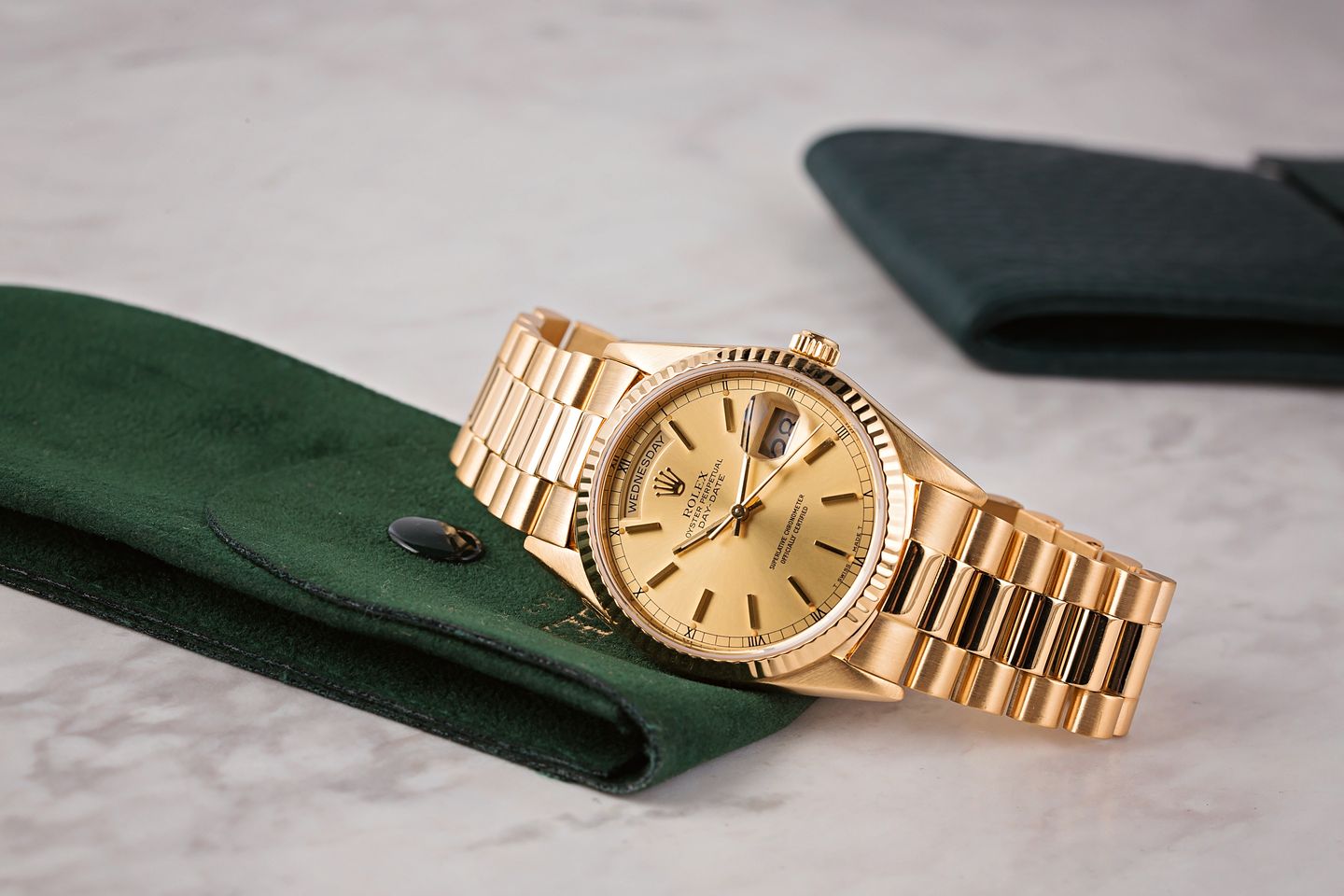
Rolex Day-Date Key Figures
Introduction Year: 1956
Case sizes: 36mm, 39mm (Masterpiece only), 40mm, 41mm
Case Materials: Gold (yellow, white, and Everose), platinum
Bezel: Fixed; domed, fluted, diamond-set, bark (vintage only)
Dial: Day window at 12 o’clock and date window at 3 o’clock
Crystal: Acrylic (vintage models only) or sapphire; Cyclops date magnification lens
Bracelet: President, Oyster, Leather, Pearlmaster (Masterpiece only)
Calibers: 1055, 1555, 1556, 3055, 5055 (quartz), 3155, 3156, 3255
Datejust & Day-Date Timeline
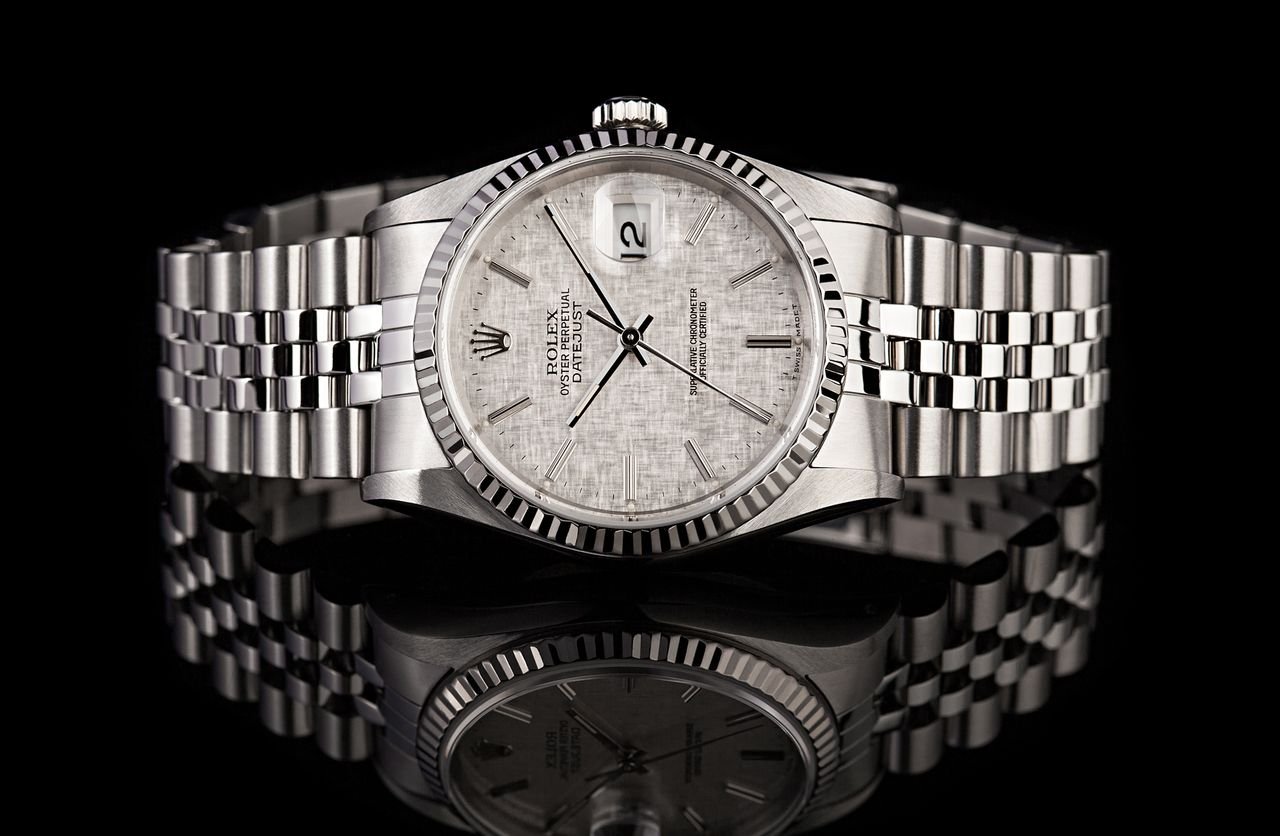
1945: Rolex introduces the Datejust model (36mm) and a new bracelet called the Jubilee
1953: Rolex invents the Cyclops lens to magnify the date window
1953: Rolex introduces the Datejust with a Turn-O-Graph rotating timing bezel
1956: Rolex introduces the Day-Date model (36mm) and a new bracelet called the President
1957: Rolex introduces the Lady-Datejust with 26mm cases
1960: Rolex introduces the midsize Datejust with 31mm cases
1960s: Lyndon B. Johnson became the first U.S. president to wear the Day-Date and Rolex launches an advertising campaign calling it the “President’s Watch”
1977: Rolex updates the Day-Date and Datejust with quickset date
1977: Rolex introduces Oysterquartz versions of the Datejust and Day-Date
1988: Rolex updates the Day-Date with both quickset date and day
2000s: Rolex introduces the Day-Date Masterpiece with 39mm cases and Pearlmaster bracelets
2008: Rolex introduces new Day-Date II collection with 41mm cases
2009: Rolex introduces Datejust II collection with 41mm cases
2015: Rolex replaces Day-Date II with Day-Date 40
2015: Rolex replaces Lady-Datejust 26 with Lady-Datejust 28
2016: Rolex replaces Datejust II with Datejust 41
Rolex Datejust vs. Day-Date History
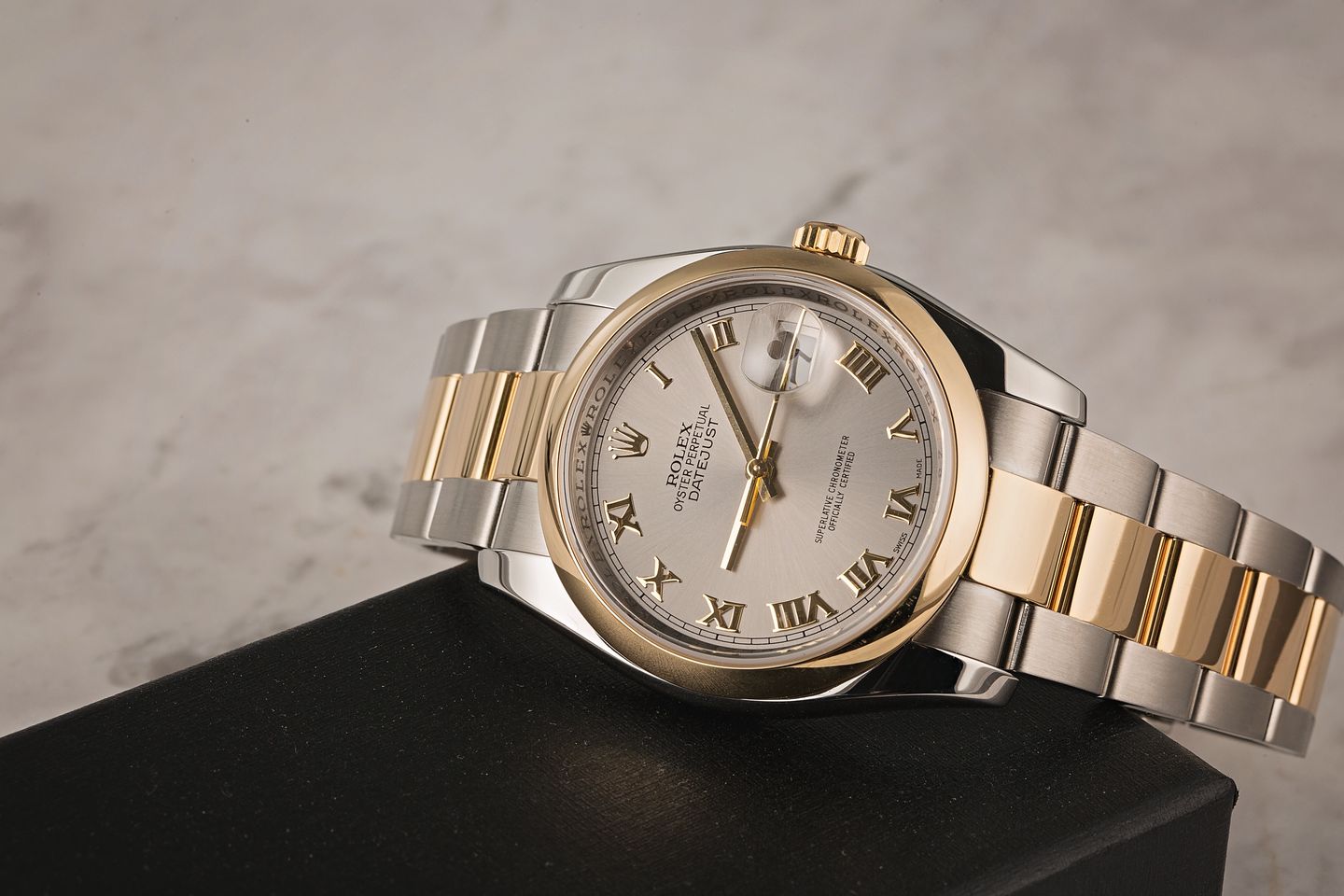
The Rolex Datejust preceded the Day-Date by more than a decade. Released in 1945 to celebrate the brand’s 40th anniversary, it was at that time the company’s most premium offering: the first waterproof, self-winding wristwatch to display a date function. However, although it was originally only available in solid gold, it would quickly go on to include models in full stainless steel, as well as Rolesor – Rolex’s proprietary two-tone meeting of steel and gold. In that way, it began to forego its top-of-the-class status and started to act as more of a bridge between the brand’s purely dress pieces and their burgeoning series of professional watches. Here was something you could legitimately wear to the office but that remained versatile enough to not look out of place with a t-shirt and jeans on the weekend.
Not so much with the Day-Date. Debuting in 1956, it was, and has always been, exclusively forged from precious metals. Yellow, white, and Everose gold plus the shimmering luxury of pure platinum, there has never been a hint of steel in its makeup, not even the popular two-tone Rolesor finish. It too was something of a revolution upon its arrival, the first wristwatch to have both the date and the day of the week spelled out in full on its dial. Now, after more than 60-years, it is still Rolex’s most aspirational watch, the ultimate symbol of achievement and success, beloved by everyone from heads of state to music superstars.
Rolex Datejust Vs. Day-Date Options
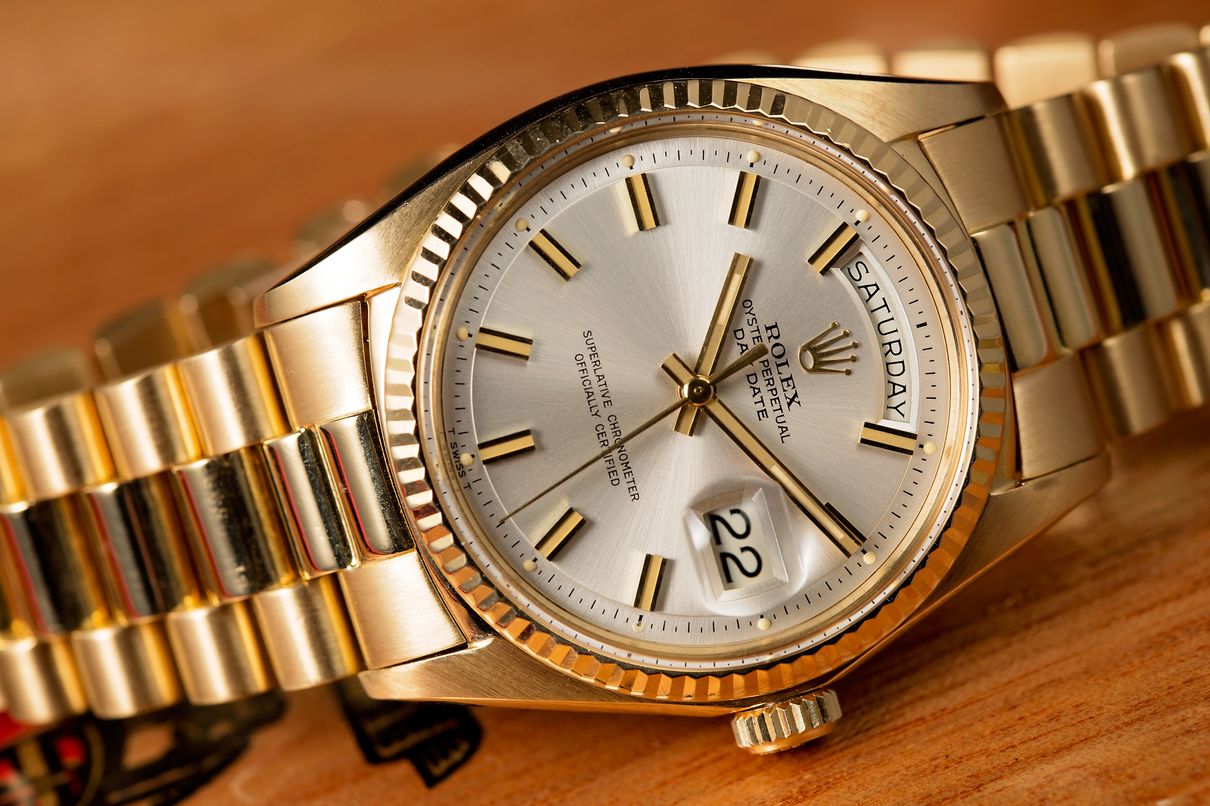
As you can imagine, the Rolex Datejust has more styling options than the Day-Date and not merely in its metals. It is currently available in several sizes, including 26mm (discontinued Lady-Datejust) 28mm (Lady-Datejust), 31mm, the traditional 36mm, and since 2009, 41mm size. The Datejust gives potential customers a huge range to choose from, enabling anyone to find the watch that fits them perfectly.
The Day-Date, by comparison, was issued only as a 36mm model right up until the 2000s when Rolex released a special collection called the Masterpiece. The Masterpiece watches had Day-Date dials, 39mm cases, and Pearlmaster bracelets. Rolex discontinued the series after around a decade. In 2008, the 41mm Day-Date II arrived, which remains the largest version of the Rolex President watch ever made. However, the model was relatively short-lived and was replaced after a few years with the current Day-Date 40, which loses a millimeter but is still noticeably larger than the conventional 36mm size.
Beyond that, the number of different dial, bracelet, and bezel combinations available on both Rolex watches is staggering. Either piece can be configured to be as understated or as flashy as personal tastes dictate, but each can lay claim to their own representation of the classic Rolex aesthetic.
For the Datejust, it is the yellow Rolesor construction; a steel case, with yellow gold used for the bezel (which should be fluted for full effect), winding crown, and bracelet center links, with a champagne (gold) dial. It is the perfect metaphor for the model: an effortless two-tone fusion of both strength and luxury with enough flexibility to match with anything.
For the Day-Date, the all-time definitive version is the one in solid 18k yellow gold, also topped with a fluted bezel and fitted with a champagne dial. Defiantly affluent, it looks as if you are wearing a solid gold ingot on the wrist. Not for nothing is it known colloquially as the Texas Timex.
The Rolex Datejust was the first watch to receive the brand’s Cyclops lens back in 1953. Since then, it has made its way onto all the brand’s date watches (except for the Deepsea), with varying levels of contention. While it could be debated that it does affect the overall symmetry, it has become a signature element of the brand, and of the Datejust and Day-Date especially.
Rolex Datejust Vs. Day-Date Pricing
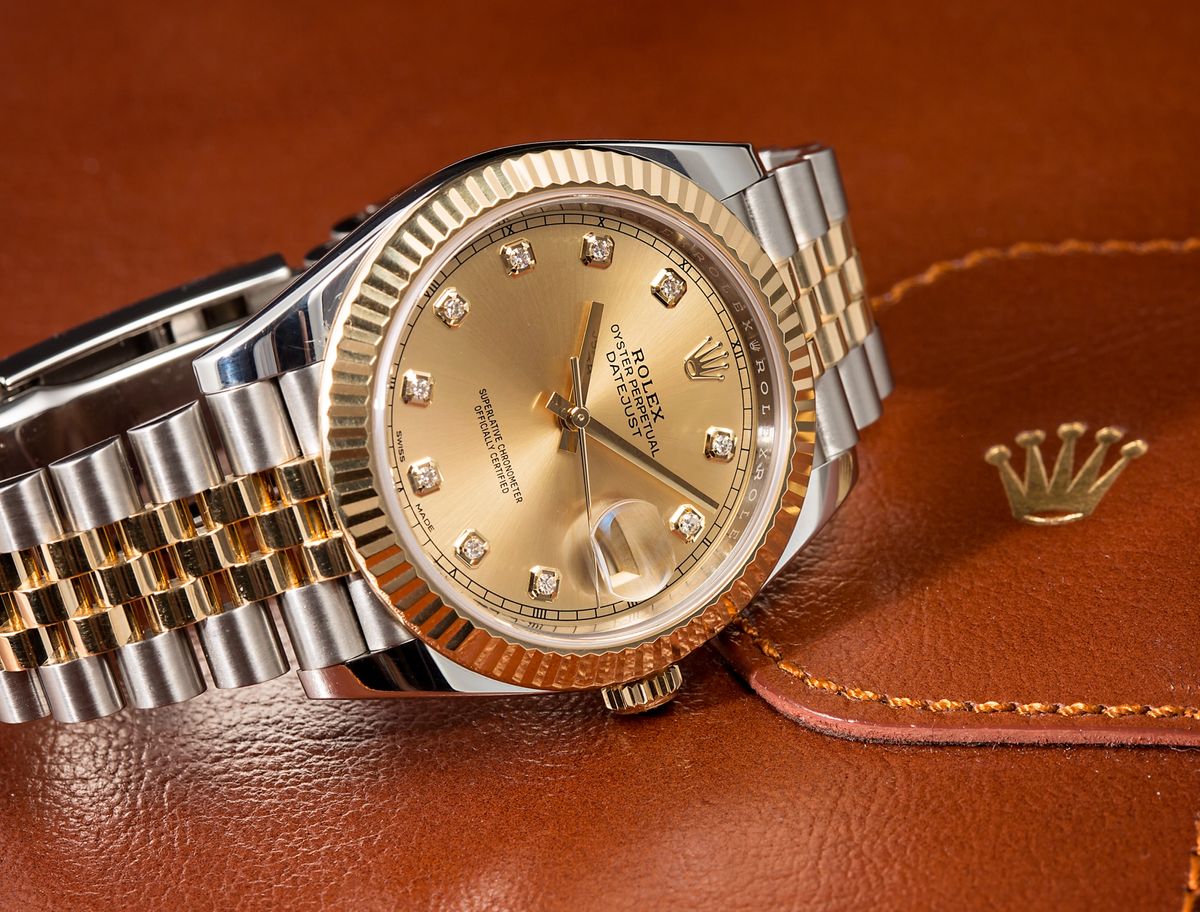
With its choice of only the finest metals and its extra functionality, prices for the Day-Date have long outstripped those of the Rolex Datejust. In the current portfolio, you can buy into the Datejust family with a steel 36mm model for as little as $7,050. The cheapest Day-Date is about five times that. Even a Rolesor Datejust (there is actually no all-gold version in either 36mm or 41mm anymore) is less than half the price of the entry-level President.
On top of that, it pays to keep in mind maintenance costs. The Day-Date is a more complicated beast, and its movement takes increasingly involved and therefore longer servicing. Replacement parts are also something you will want to consider. A gold bracelet will stretch sooner than a steel one, and will also need overhauling at some point. And if you really want to scare yourself, check out how much a new one from Rolex will set you back. Of course, this all only applies to brand new models. Two of the best things about both watches are just how many have been made over the years, and how little their outward design has changed. This has left us with a pre-owned market teeming with more affordable models that look pretty much the same as the latest examples.
You can have a vintage Day-Date, with its eponymous President bracelet, in great condition for less around $10,000. That is for a solid gold Rolex, mind you. A Rolesor Datejust can be had for under $5,000, complete with its five-link Jubilee band.
Rolex Datejust Vs. Day-Date Updates
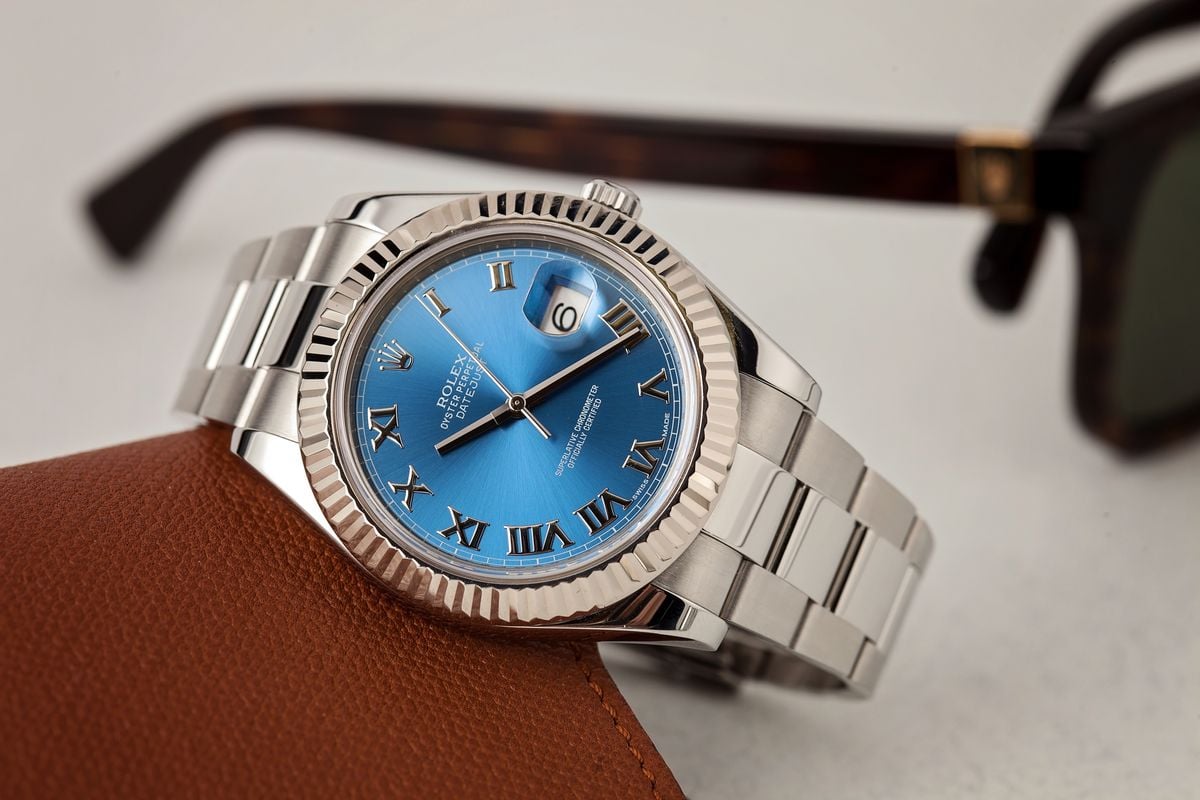
The main thing to take into account if buying classics of either watch is the various levels of convenience both models have been given over the years when it comes to their calendar functions.
The quickset feature, whereby the date can be set independently with the crown without having to spin the main hands through 24-hours, wasn’t introduced until the mid-70s. The Cal. 3035 (Datejust) and Cal. 3055 (Day-Date) powered the ref. 160XX and ref. 180XX series respectively. But the President’s movement was only a single quickset, meaning just the date numeral could be forwarded easily. It wouldn’t be until the ref. 182XX range came along in 1988 that it got the Double Quickset Cal. 3155 that allowed for control over the day of the week as well.
The latest Day-Date and Datejust (36mm and larger) watches benefit from Rolex’s newest generation calibers – 3255 and 3235, respectively. These new movements supply the watches with a longer power reserve (70 hours instead of 48 hours) for even better practicality.
Other added touches aimed at refining each model can be seen as improvements or not, simply depending on how retro you like your watch. Sapphire crystals didn’t appear until the end of the 1970s, and are generally tougher and far more scratch-resistant than the previous acrylic ones; however, some people prefer the older style for their aesthetic appearance. Similarly with the so-called pie-pan dials. These, where the outer edge of the dial is slightly recessed and looks like an upturned plate, were phased out completely during the seventies, but are immensely popular in the collector community.
Quintessential Rolex Watches
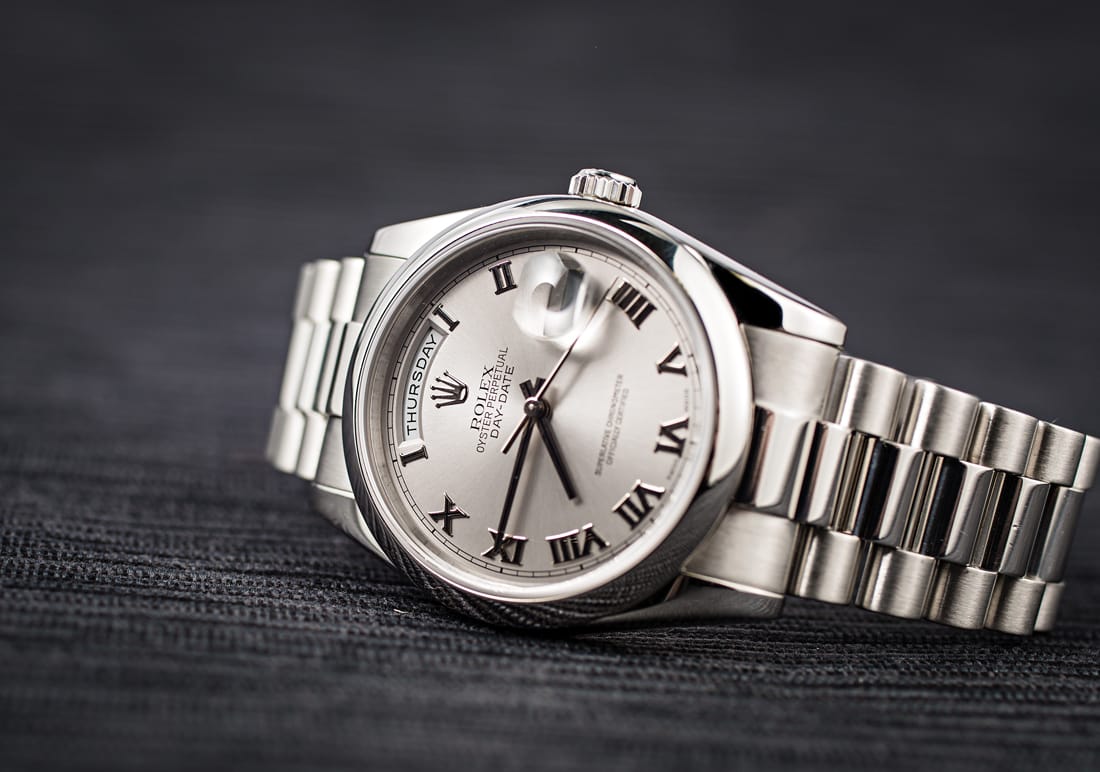
In the end, while the two certainly share more than a few similarities in styling, the Rolex Datejust and Day-Date have very different characters.
The Day-Date President is a declaration, something that tacitly tells the room “I’ve made it” – wherever that room happens to be. It’s the ultimate watch of prestige and a globally recognized symbol of success.
The Datejust can be the more laid-back option, often bought by those looking for the one good watch that will go anywhere and last a lifetime. However, you can certainly find ultra-luxe versions of the Datejust too, crafted in precious metals and embellished with diamonds. The Lady-Datejust and mid-size Datejust 31 watches even come with the option of the iconic President bracelet.
As always, the one you choose should be the one that speaks to you the most. Both the Datejust and the Day-Date are quintessential Rolex, and among the finest timepieces ever made.
Nice article. Good insight to buyer needs vs desire.